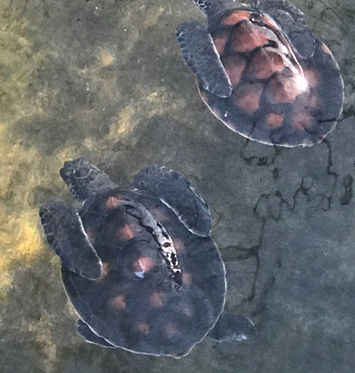
China's Area-based Marine Conservation
Dr. Ellen Pikitch (IOCS), and Dr. Guifang “Julia” Xue (Shanghai Jai Tong University) led a multi-year study entitled: An Analysis of Marine Protected Areas with support from the Lenfest Ocean Program. The study was undertaken to better understand and make available to an international audience China’s domestic area-based marine conservation efforts. Some marine protected areas have been in place in China for more than half a century, yet knowledge of the types, location and objectives of these sites was poorly known despite this long history. The research effort involved site visits within the country, as well as compilation of data from multiple sources.
Publication in Science Advances
In November 2021 a comprehensive paper on China’s area-based management was published in Science Advances. Co-authors from the Stony Brook University team included Dr. John J. Bohórquez, Dr. Ellen Pikitch, Timothy Frankstone (IOCS alumn), Maria Grima, and Dr. Karine Kleinhaus and China-based co-authors from Shanghai Jiao Tong University included Dr. Guifang “Julia” Xue and Dr. Yiyi Zhao.
Whereas international databases only listed 15 MPAs in China, the research team identified 326 sites with area based conservation measures that addressed 142 conservation objectives.
Of these sites, 273 were MPAs and 53 were marine aquatic germplasm reserves (AGRs), a type of fishery management zone that can offer an equivalent level of protection for marine life and habitats. These types of areas that are not labeled as MPAs but offer conservation benefits are referred to as Other Effective area-based Conservation Measures (OECMs).
We evaluated the progress of China’s MPA and AGR network against international conservation targets and assessed how well the areas covered different types of ecosystems in order to identify where additional protection is most needed.

Study Methods and Results
We first pieced together a comprehensive database of MPAs and AGRs in China including their names, locations, area (km2), age, and conservation objectives (species or ecosystems of special importance). The result of our compilation is the first comprehensive publicly available database of marine protection in China to date.
We then grouped China’s seas into representative habitats based on sea-surface conditions (remote sensing) and depths through a two-part principal components analysis and k-means cluster analysis. Once habitats were defined, we could overlay the MPAs and AGRs with the habitats and identify how well protected each habitat was.
The study was the first body of work to suggest that China may have achieved Aichi target 11 and protects over 10% of its marine and coastal habitats with a national network of MPAs and AGRs. The extent to which the Aichi target has been met depends upon what portion of the AGRs qualify as OECMs; a topic that requires further study. Protected, endangered and culturally significant species, sensitive and highly important ecosystems, and commercially valuable fish species were noted within the area-based conservation network. Shallow habitats were more comprehensively protected, especially by fully or highly protected MPAs, whereas deeper waters further offshore were afforded less protection.
Key Takeaways
-
13% of China’s marine and coastal habitats are protected by MPAs and and AGRs, 4.5% from mostly no-take MPAs and the remaining 8.5% from AGRs.
-
Shallower habitats (<10 meters) were the most highly and consistently protected, the majority of within strongly or fully protected MPAs. Deeper habitats offshore were less protected with the majority within less restrictive AGRs, and waters beyond the continental shelf that include important habitats like undersea canyons and seamounts were not protected at all.
-
AGRs typically included commercially significant species of fin fish and shellfish among their objectives, whereas MPAs more frequently included important coastal ecosystems like mangroves, coral reefs, and coastal wetlands, as well as charismatic megafauna and endangered animals including birds, marine mammals, horseshoe crabs, and others.

Recommendations for China
The study suggests that China could benefit from adding more protection for pelagic ecosystems, especially by no-take MPAs, particularly in tropical and sub-tropical regions. Some AGRs could be converted to MPAs in these regions to help strengthen protection. Deep water ecosystems including undersea canyons and seamounts should also be protected, where currently none is provided. Last, it is vital that China develop long-term monitoring programs to understand management impact beyond numerical goals.
Explore our interactive online map
In addition to the publication and corresponding supplemental dataset, we developed an online interactive map, spearheaded by Maria Grima, which the public can explore to learn more about MPAs in China, available on the Stony Brook website.
Resources
Press Coverage
-
Stony Brook University News
-
Hakai Magazine
-
Mongabay






















